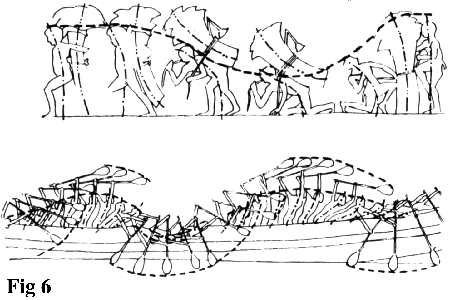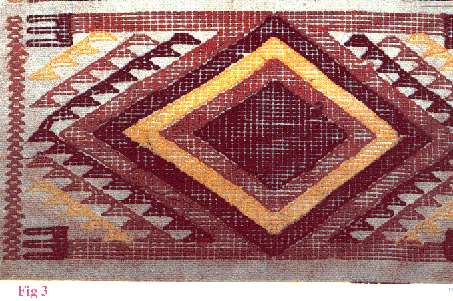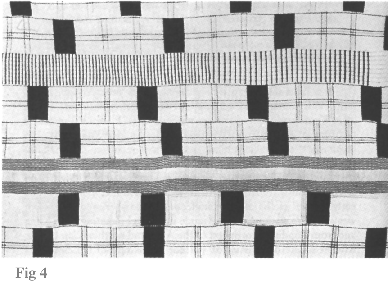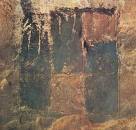
This is an update to my previous post on 'abstraction' and 'formalism' from history and other cultures. One thing I should stress is that our western definitions of 'art' and 'abstraction' and 'formalism' are not a good fit with prehistoric artefacts and objects/'art' from other cultures. We should resist inferring a 'universal aesthetic', that these other cultures saw these artefacts as we do (though we cannot in my opinion rule it out in some absolute sense, i.e. perhaps in patterns/forms have an appeal of some sort while also serving a specific social function?).
Using 'African art' and its definition as such by Europeans as an example...
There was little need to understand the culture from which a piece came if one could appreciate the object on purely formal grounds. If one could speak, as both collectors and dealers did, of a "universal aesthetic," then the specifics of the object could be ignored......the notion of a purely formalist or universal aesthetic was foreign to African society of the time (as it was, indeed, to most societies). While sculptural traditions certainly reflected local judgement and taste - a local aesthetic, that is - they also, often to a far greater extent, reflected concerns about ritual or spiritual efficacy. Also key were assessments based on an object`s ability to express the status of the owner.... Taken out of its context, by a George or a Guillaume, the object-as-art could not be evaluated by the standards of its makers or original users.
...Recent studies in the fields of art criticism and art history reject the idea of a univeral aesthetic. Michele Coquet argues that art historians should study local or culturally specific aesthetics "Every culture has its own conceptions of what is beautiful and what is ugly - conceptions which are tied to a whole range of culture-specific images and experiences....Views of what is beautiful and what is not must be considered in terms of the broader cultural frameworks within which they appear"
"African art" as a category consisting of objects taken outside their historical and cultural context is a product of the colonial encounter....To circumvent this situation the disipline of African art history needs to be reinvented....
In Diawara`s words, "moving away from the primacy of the aesthetic to work in greater depth on historical and anthropological aspects has become essential."
Is There Such a Thing as African Art?, by Peter Mark
Record of the Art Museum, Princeton University.
http://links.jstor.org/sici?sici=0032-843X(1999)58%3A1%2F2%3C7%3AITSATA%3E2.0.CO%3B2-4
Both aspects are worth considering, the social functions of these objects/works in their proper context and their aesthetic appeal or form, i.e. this work still looks 'nice' to us and informs our art, it is a translation of some sort. Consider African textiles (a good place to find what we would call abstract patterns)...
A priest told Henry Drewal that the cloths, with their richly decorated weft-float patterns, symbolize 'long lives well lived,' in sharp contrast to the plain white cloths the Ijebu Yoruba are said to wear when they first come into the world. Thus the patterns and colors represent the richness and diversity of an individual`s experience in life, including acquired knowledge of the spirit realm (Drewal, pers. com 1991)
..Another design symbolizes the drums (gbedu) played to honor kings, lesser crowned rulers, and chiefs. Actual drums are emblazoned with references to office in decorations carved in relief on their sides; these include the central image of a head with rays emanating from above and below as well as other Oshugbo or chieftaincy-related objects such as the itagbe title cloth.
As a pattern on cloth, the gbedu is shown as a diamond shape, representing the head of the drum, with its four legs extending outward. The inclusion of legs in the design distinguishes it from representations of other drum types because gbedu are always carved with leg supports. The Yoruba usually describe this drum in anthropomorphic terms. Like humans it has 'legs' and the power to 'speak' (Adegbite 1988:16-19).
A type of talking drum known as gangan is represented by small repeated triangles that surround the overall design. These triangles suggest not the shape of the drum but the actual tapping of it, a rare example of the visual conceptualization of music in African art.

Ijebu Yoruba "Aso Olona": A Contextual and Historical Overview, by Lisa Aronson
http://links.jstor.org/sici?sici=0001-9933(199207)25%3A3%3C52%3AIY%22OAC%3E2.0.CO%3B2-K
Robert Farris-Thompson (1983:207) describes such patterns as a visualization of "the famed off-beat phrasing of melodic accents in African music," noting that indigenous terminology used to describe these strip cloth weavings makes explicit use of musical analogies. Jola musicians in the Casamance region of Senegal also report striking indigenous terminology, distinguishing between oscillation ("owowogene," which applies to both instrument strings and the way that plam trees sway in the wind), resonance ("ebissa," in which a plucked string can cause a nearby string tuned in harmony to vibrate), and pitch.

http://www.rpi.edu/~eglash/eglash.dir/ethnic.dir/r4cyb.dir/r4cybh.htm
Being a music blog, how about a brief mp3 of some African polyrhythms? (though they may not have called them that of course, see above ;-)
Anonymous African Polyrhythm MP3 (O`Keefe Library)
http://library.sau.edu/accelmusic.htm
....................................................................................
While I`m at it, how about some more examples of 'prehistoric art'?.

Among the most remarkable finds from the 75 000 year old levels at BBC (Blombos Cave) are two engraved ochre plaques. Chunks of ochre were selected and carefully ground by rubbing to produce a flat surface and deliberate abstract designs were then engraved on these surfaces using a sharp stone tool. The criss-cross patterns formed are almost certainly symbolic and the meaning behind the designs made by the maker(s) must surely have been understood by community members.
We are unable to precisely determine what these designs mean as the thought processes of people who lived that long ago are not easily accessible through only their material culture. There is considerable debate as to whether these designs can be called 'art' but the jury is still out.
http://www.svf.uib.no/sfu/blombos/Artefact_Review2.html

Shown is a painted and incised 'chequerboard' pattern found in Lascaux, dated 15,000-12,000 BC. This is a "very rare example in Ice Age art on an abstraction constituting the whole picture on its own." (Andreas Lommel in 'Prehistoric and Primitive Man'). A link is made between magic traps found in other panels where they accompany animals, such as in the picture below. Of course, we do not know what it means. For all we know it might be the first dart-board.
http://www.socialfiction.org/n.php?nski=870&submit=send




No comments:
Post a Comment